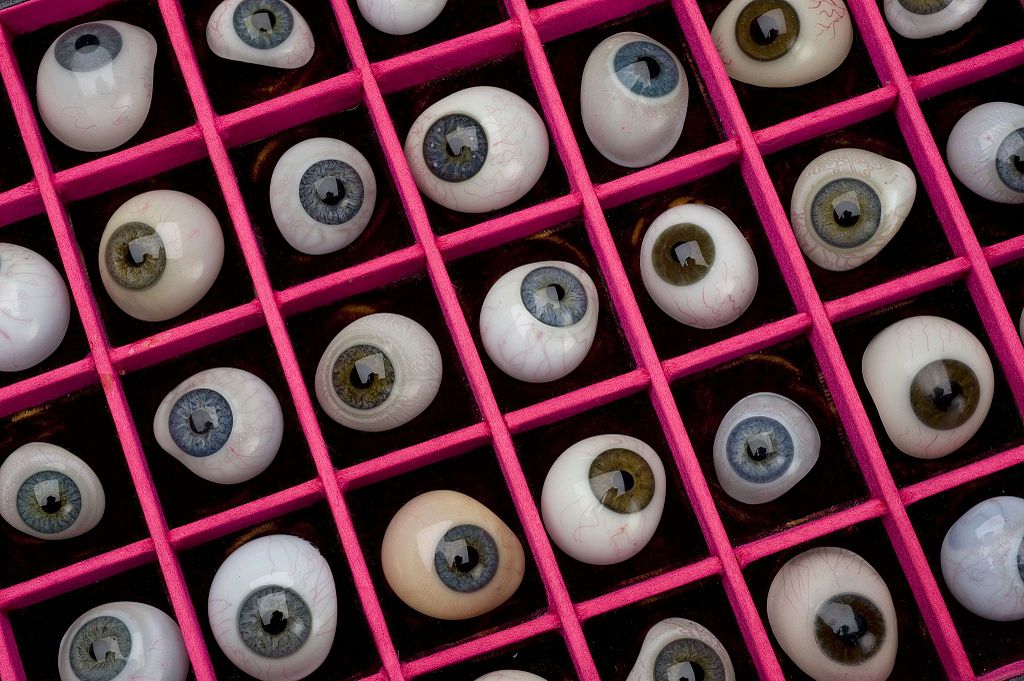TIGER OF THE STRIPE
Tiger of the Stripe Blog
Artificial Eyes

Photo Credit: Science Museum, London. Wellcome Images images@wellcome.ac.uk http://wellcomeimages.org Set of 50 artificial glass eyes, all shapes and sizes, by E. Muller, Liverpool, English. Detail view. Published: - Copyrighted work available under Creative Commons Attribution only licence CC BY 4.0 http://creativecommons.org/licenses/by/4.0/Show extended details
Seeing a picture of some artificial eyeballs just now reminded me of visiting Cotswold Collotype many years ago. At one time it was owned by Brooke Bond, the tea people, to print cards (much like cigarette cards) which they put in their packets. The collotype process is screenless and is similar to lithography except that it relies on moisture in the atmosphere. While I was there, I saw sheets of eyes with NHS copyright notices on them. They were destined to be embedded into perspex to make false eyes. The screenless nature of collotype was an advantage as the perspex lens would enlarge the printed image – imagine staring into someone's eyes and seeing halftone dots! It must have been a very long time ago because they only printed blue and grey eyes, which I was told accounted for the vast majority of eyes in the UK. With immigration from many areas where brown eyes predominate, I doubt if that is still the case – my own are hazel.
Oxford University Press used to have a collotype press which was, I think, mostly used for printing illustrations of manuscripts for the Early English Text Society's publications. I have also seen postcards printed by OUP using the process. As far as I know, there are now no collotype presses in the UK.